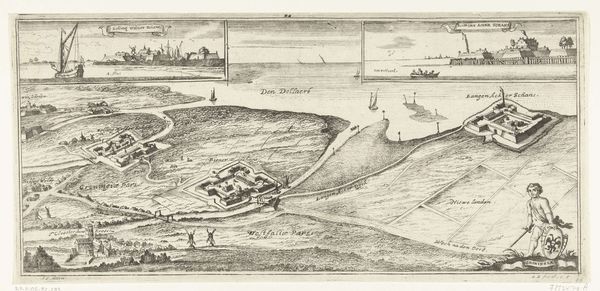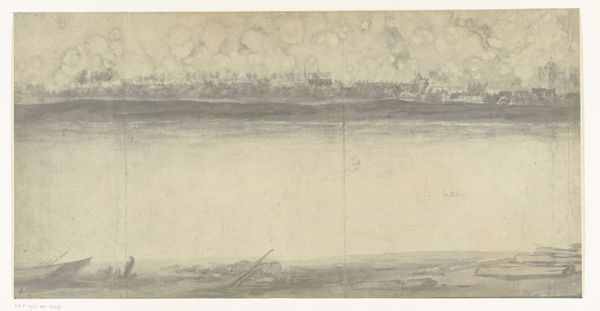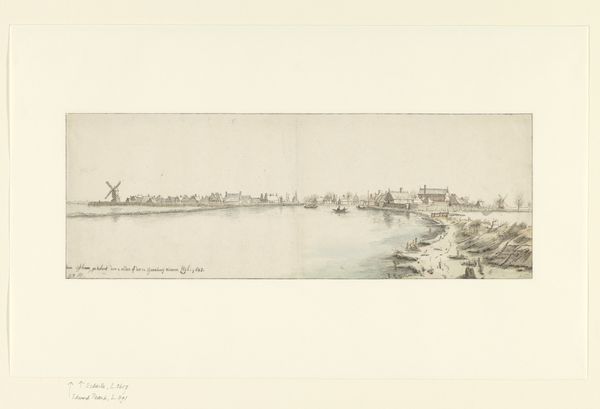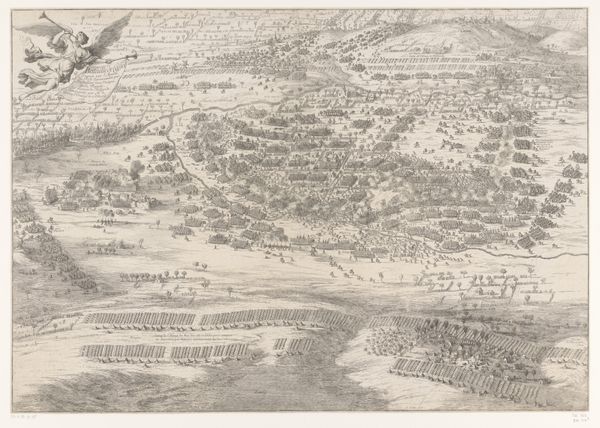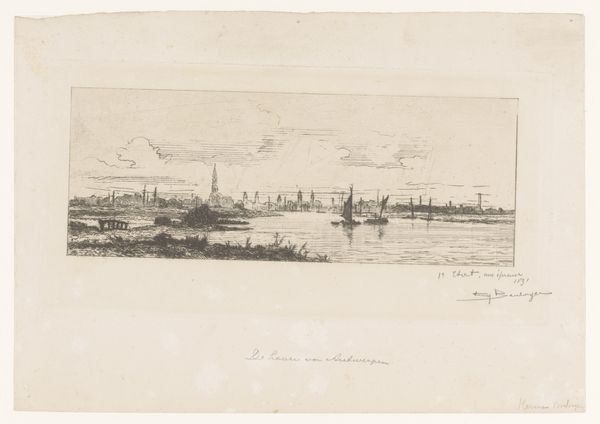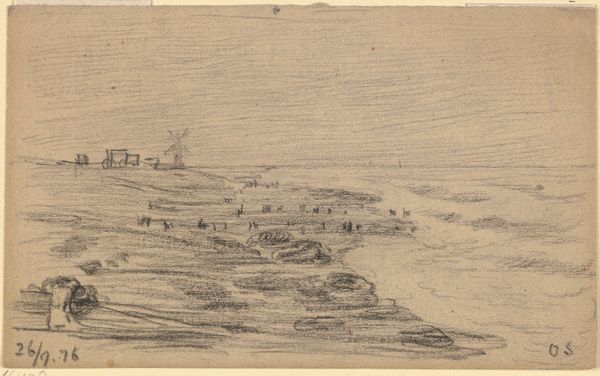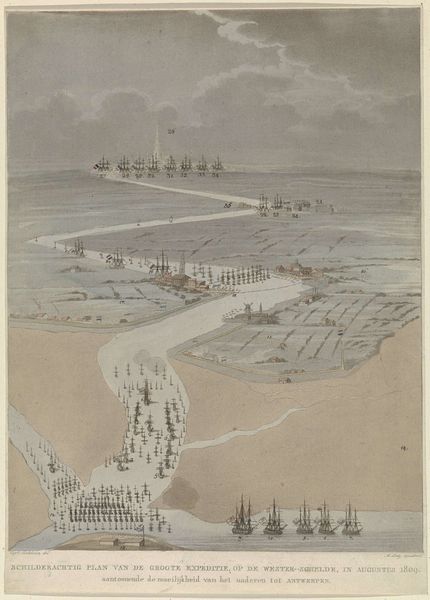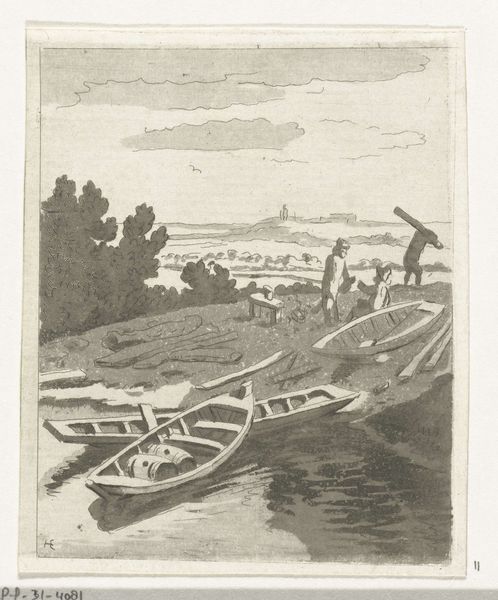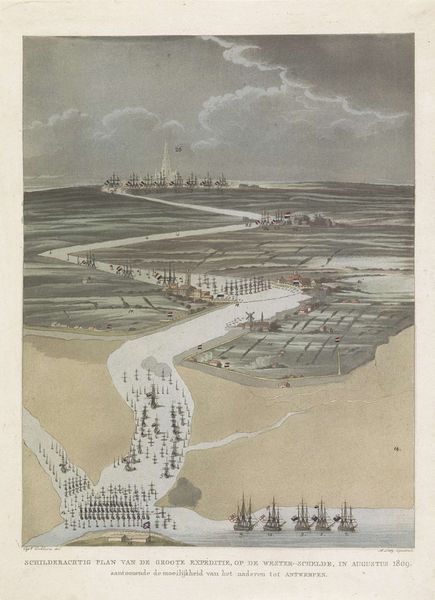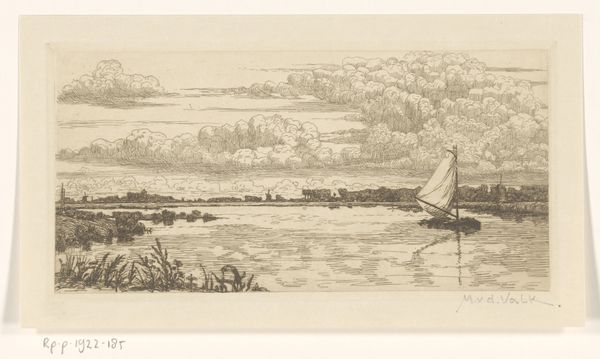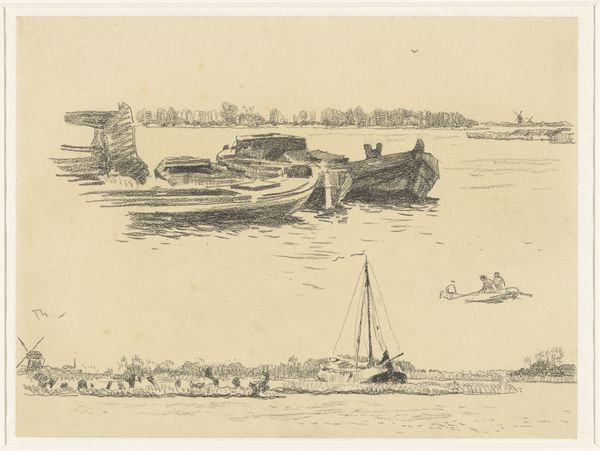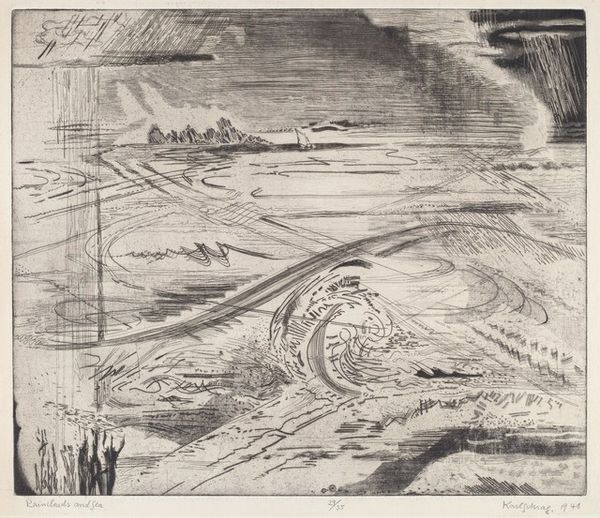
Dimensions: height 453 mm, width 330 mm
Copyright: Rijks Museum: Open Domain
Curator: Let’s spend a moment with this fascinating 19th-century etching, dating from 1832 to 1833. It's entitled "Loop van de Schelde van Fort Bath tot Antwerpen," or "Course of the Schelde from Fort Bath to Antwerp". It is currently held here at the Rijksmuseum. Editor: The first thing that strikes me is its surprisingly modern feel. It has almost an infographic quality, plotting the river's path as a course of commerce and power. I immediately consider how much trade passed up and down that vital waterway and what it meant to the local economies. Curator: Indeed. Etchings like these, particularly when depicting waterways, are fascinating cultural artifacts. Rivers always represent flows of capital and the arteries of colonialism, literally mapping resources and political influence. Think of the legacies intertwined with this waterway for all groups, but especially merchant interests and laborers... Editor: Absolutely, I am drawn to the boats; I keep trying to discern the different types. Each ship is so meticulously rendered, I almost want to name each of them for their archetypical values in trade and travel in general! Their hulls remind me of maritime ventures depicted over centuries. Curator: We need to recognize this artist was actively interpreting the space around him. Remember how this visualization shapes understandings, particularly from a European perspective, centering navigation and extraction while inevitably erasing alternative ecological realities and indigenous ways of knowing the river. Editor: And I notice that Antwerp, sitting so majestically at the river's upper reaches, dominates as the clear destination. The symbols of civilization - the churches, architecture – all these reflect that cultural centrality, it almost becomes a reflection of the ambitions driving those empires. Curator: That perspective certainly held great sway during that era. But how do we begin to critically question, today, what that ambition has meant regarding material wealth distribution or in shaping colonial power structures globally? That is a crucial interrogation point for engaging with artworks like these in our contemporary moment. Editor: These symbols, repeated across time, across continents, almost like visual spells holding a continuity that shaped global awareness. They speak powerfully to our historical consciousness. Thank you, Curator. Curator: An essential awareness when attempting to deconstruct, or hopefully reconstruct, the ways we navigate visual worlds—or historical and even ideological terrains through art. Thank you, Editor.
Comments
No comments
Be the first to comment and join the conversation on the ultimate creative platform.
